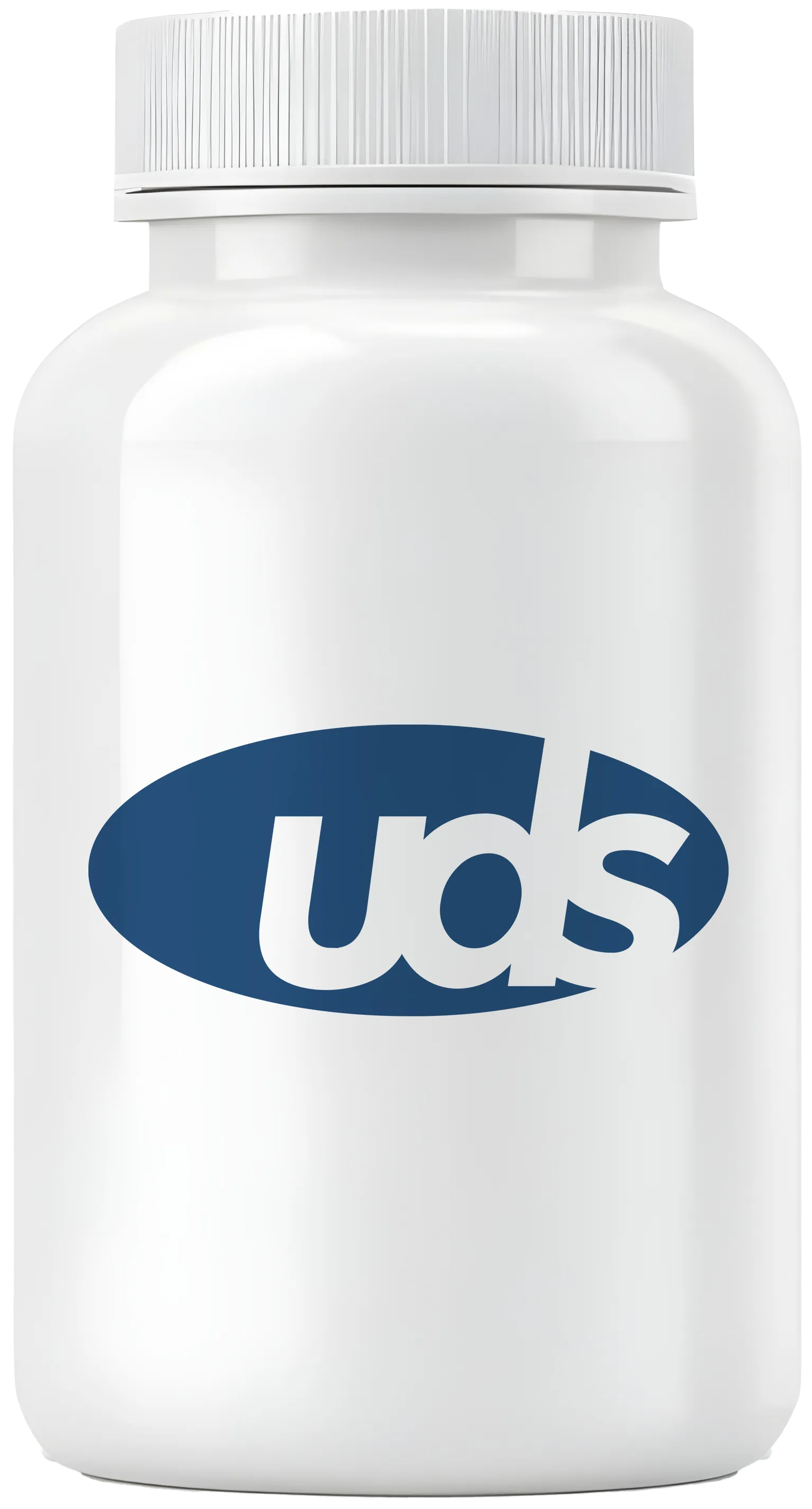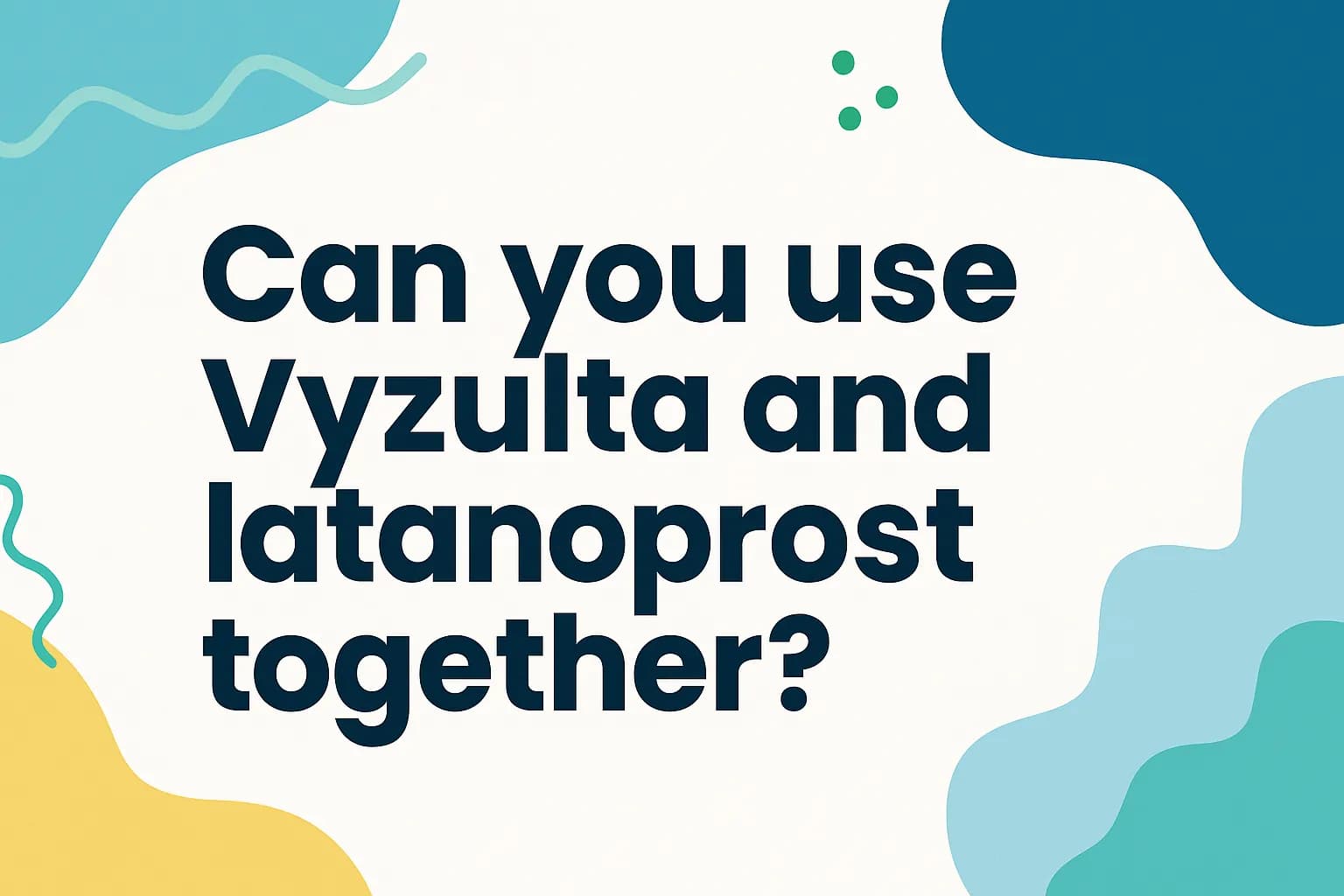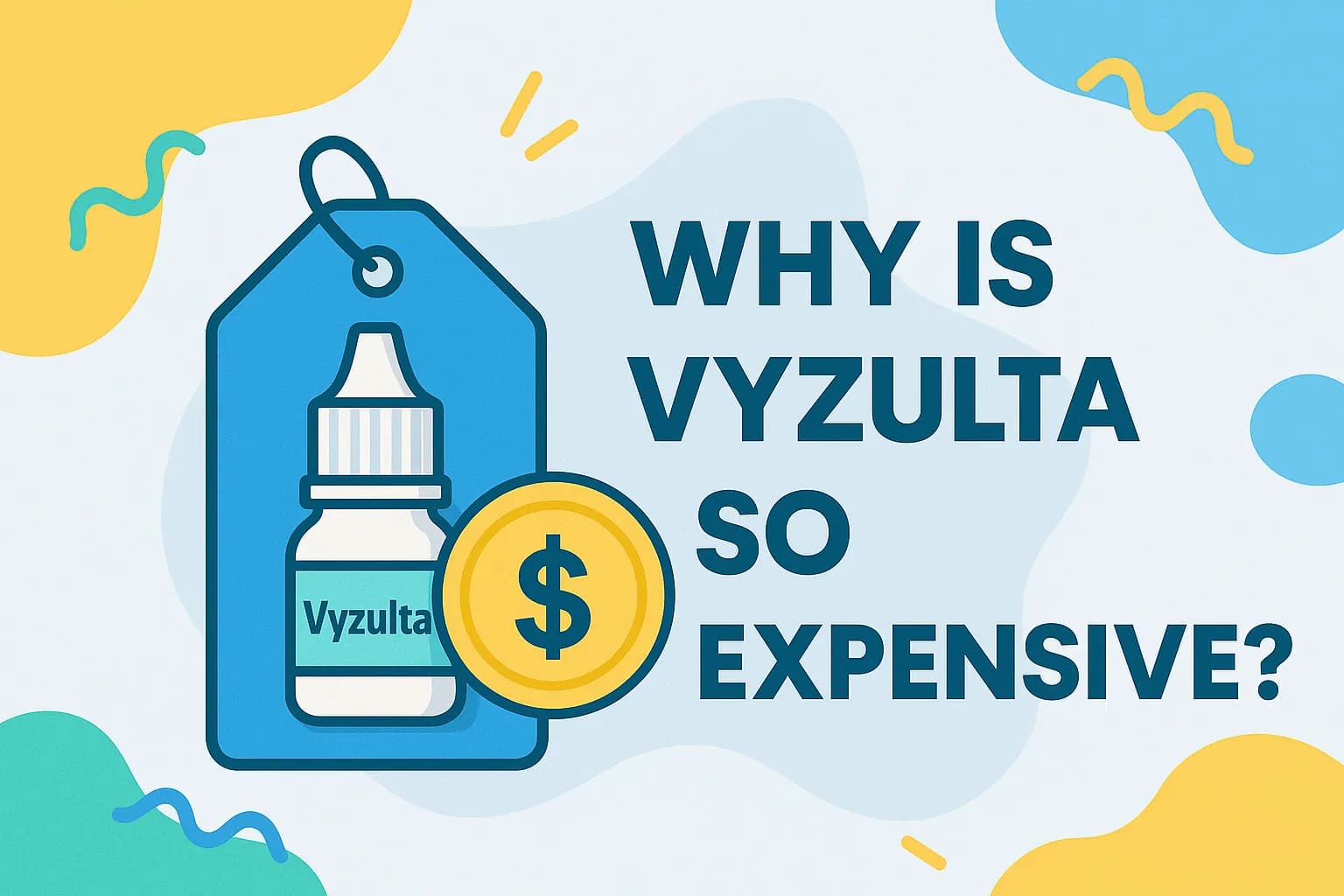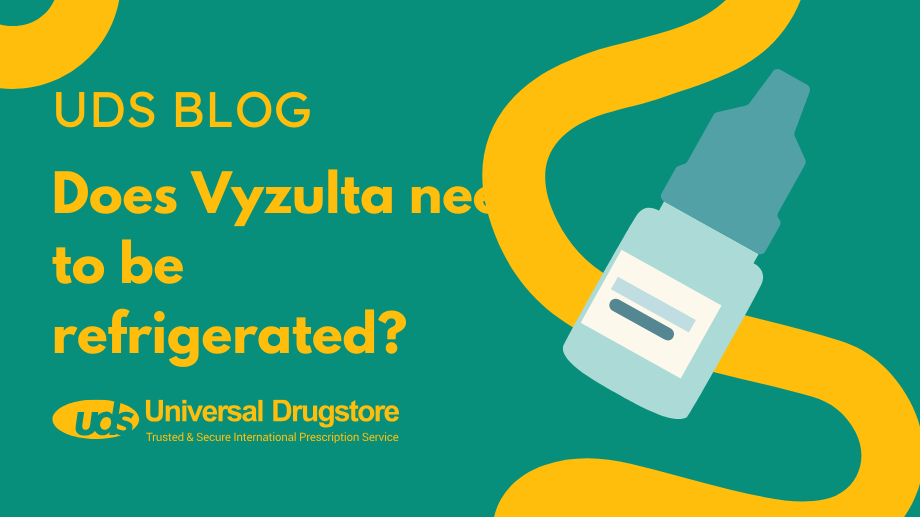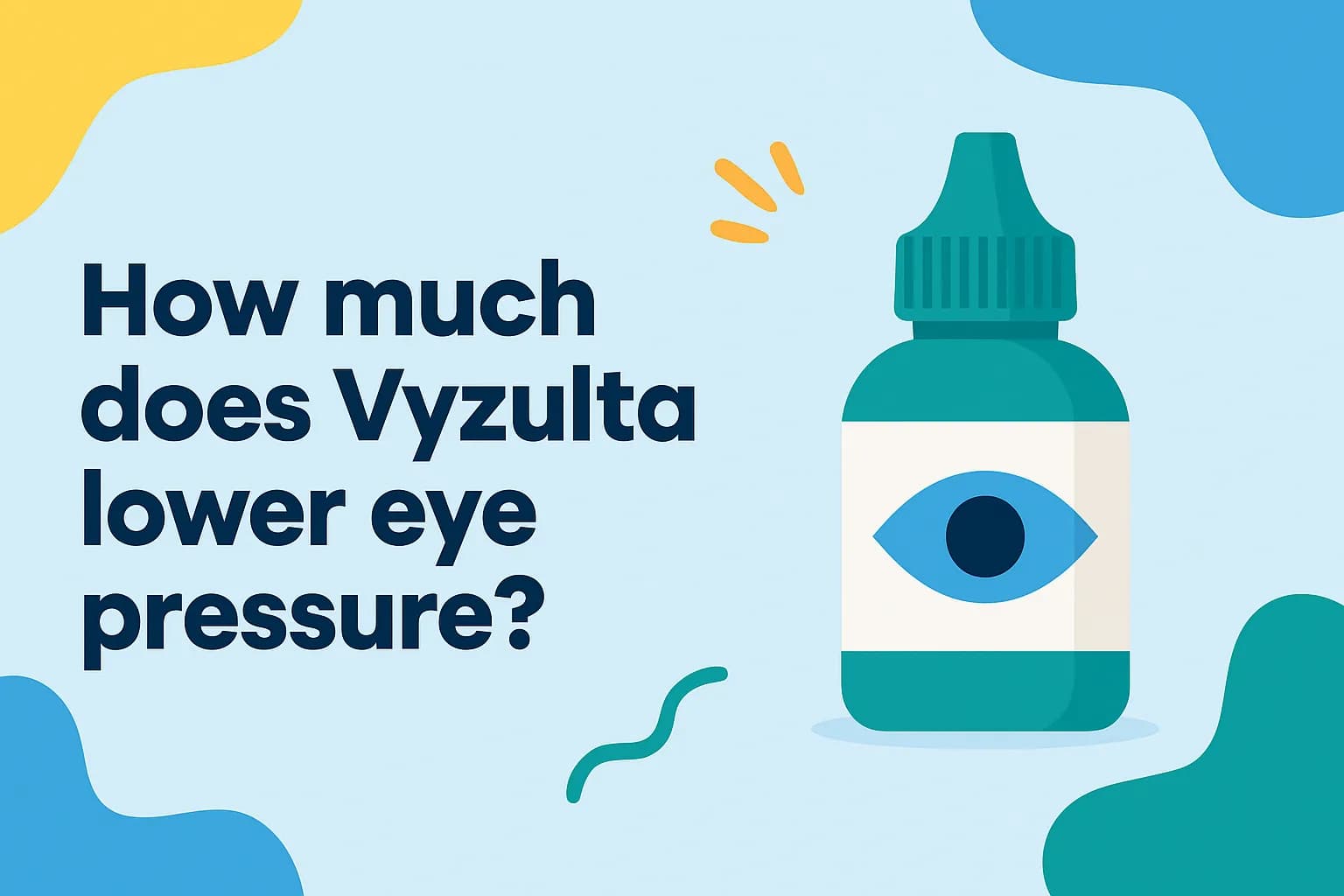Can you use Vyzulta and latanoprost together?
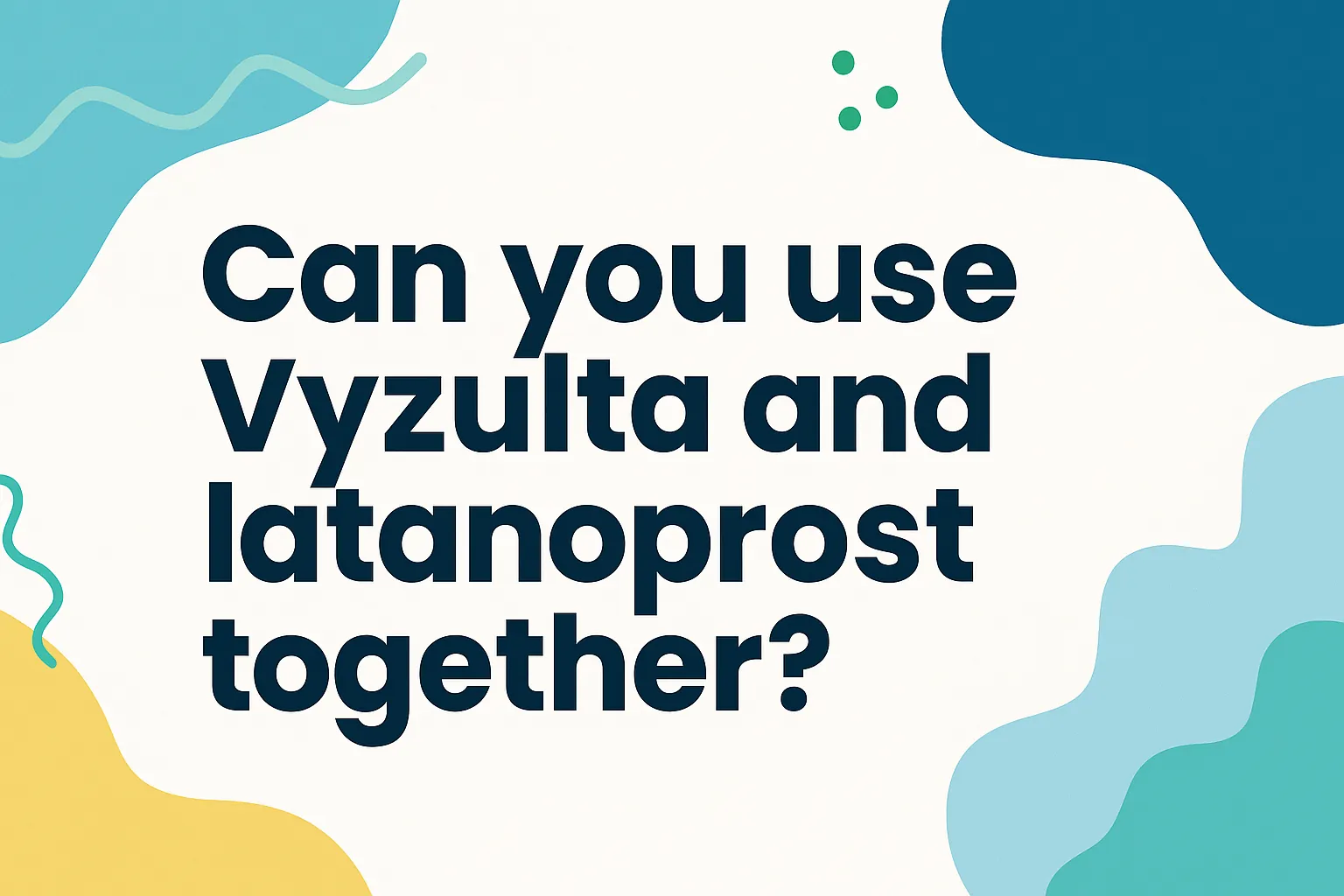
Glaucoma patients have optic nerve damage from fluid building up in their eyes. If left untreated, this eye pressure can permanently damage your vision. Glaucoma is the second leading cause of blindness in the world. If you are one of the estimated 3 million Americans who suffer from glaucoma, you may have been prescribed a topical glaucoma treatment such as Xalatan (latanoprost) or Vyzulta (latanoprostene bunod ophthalmic solution).
While there are cases of using more than one medication to lower your eye pressure, can you use these 2 medications together? No, these 2 eye drops are both prostaglandin analogs and only one should be used. In fact, Vyzulta is metabolized into latanoprost once it enters the eye so they essentially contain the same medication. What makes them different is that Vyzulta also contains butanediol mononitrate, which releases nitric oxide that helps fluid flow out of the eye more easily using a different pathway than latanoprost.
There have been clinical trials that compared Vyzulta to timolol and latanoprost. Vyzulta showed greater eye pressure lowering when compared to these medications. Patients using Vyzulta saw an average IOP reduction of 7.5 mmHg to 9.1 mmHg from their baseline IOP over 3 months. More than 40% of patients achieved a 40% reduction in their IOP after 3 months in some studies.
Because of this, Vyzulta can be used as either a first-line treatment option or it can be used along with other glaucoma medications. Other commonly used medications include alpha-adrenergic receptor agonists (brimonidine), beta-blockers (timolol), Rho kinase (ROCK) inhibitors (Rhopressa), and carbonic anhydrase inhibitors (brinzolamide).
Vyzulta FAQs
What conditions are Vyzulta approved to treat?
Vyzulta (latanoprostene bunod) is a topical ophthalmic solution manufactured by Bausch & Lomb. It is a nitric oxide-donating prostaglandin analog that is FDA-approved for the reduction of intraocular pressure (IOP) in patients with primary open-angle glaucoma or ocular hypertension.
What is Vyzulta’s mechanism of action?
Vyzulta works by metabolizing into two moieties, latanoprost acid and butanediol mononitrate. It works to reduce intraocular pressure (IOP) by increasing the outflow of aqueous humor (fluid in your eye) through two pathways—the trabecular meshwork and the uveoscleral pathway. Latanoprost acid, a prostaglandin analog, mainly works within the uveoscleral pathway while butanediol mononitrate releases nitric oxide, which is thought to relax the trabecular meshwork. Helping fluid drain from your eye will lead to a lower IOP and prevent vision loss.
What are the side effects of Vyzulta?
The most common side effects of Vyzulta in clinical trials include:
- Conjunctival hyperemia (signs of blood in the lining of your eye)
- Eye irritation
- Eye pain
Some other possible side effects of Vyzulta include:
- Itchy eyes
- Blurred vision
- Feeling like there’s something in your eye
- Instillation site pain
- Darker pigmentation of the iris (colored part of your eye), eyelid
- Eyelash changes which are usually reversible upon discontinuation of treatment
- Cornea inflammation (swelling and redness)
Vyzulta may also cause more serious side effects including:
- Serious allergic reactions, including:
- Hives
- Swelling of your throat and tongue
- Trouble breathing
- Eye inflammation and swelling
Vyzulta may cause swelling and redness in your eye. It can also cause macular edema or swelling of the macula (a part of the eye that is important for clear vision). You are more likely to experience this if you already have eye inflammation or if the lens of your eye is missing or damaged. Notify your healthcare provider right away if you notice eye discomfort, visual field loss, or other vision changes while using Vyzulta.
Shop Medications
Bacterial infections
Eye drop bottles such as Vyzulta can cause eye infections. These bacterial infections are more likely to occur if your bottle of Vyzulta gets contaminated. It is important to wash your hands before each use of your eye drop and to not touch the dropper tip with your hands, eyes, or any other surface. Let your healthcare provider know if you develop signs of an eye infection such as eye pain, vision changes, sensitivity to light, or eye discharge.
These are not all of the possible adverse events of Vyzulta. You should always seek medical advice from your ophthalmologist or other healthcare professional for any questions or concerns about your medical condition or treatment. You should also read all the patient information, including your Medication Guide that comes with Vyzulta. You can report side effects to the FDA at 1-800-FDA-1088 or www.fda.gov/medwatch.
What precautions are there with Vyzulta?
You should not use Vyzulta if you are allergic to latanoprost acid, butanediol mononitrate, or any of the inactive ingredients in this product. You should be sure your healthcare provider is aware of all your medical conditions as they may be contraindications or you may need increased monitoring during treatment, including if you:
- Wear contact lenses. Because this medication contains the preservative benzalkonium chloride, contact lenses should be removed before using Vyzulta and may be reinserted 15 minutes after administering it.
- Have a history of eye inflammation (iritis/uveitis)
- Have a history of macular edema or have risk factors for macular edema
- Are pregnant or plan on becoming pregnant
- Are breastfeeding or plan on breastfeeding
Are there any drug interactions with Vyzulta?
When Vyzulta is taken with other prescription drugs, over-the-counter medications, vitamins, herbal products, and supplements, it may change how they work or increase the risk of side effects. Currently, there are no significant drug interactions listed for Vyzulta. However, be sure to tell your healthcare provider about all your current medications so they determine if they are safe to use together.
Can you take latanoprost and Rhopressa together?
Combining glaucoma treatments is common practice if a single medication is not effectively lowering your eye pressure. There are several fixed-dose combination therapies available in the United States. One of these is Rocklatan, which combines latanoprost and the active ingredient in Rhopressa, netarsudil. The typical dose of Rocklatan is 1 drop in the affected eye(s) once a day in the evening. It is generally well tolerated and effective. Some of the most common side effects are eye redness, eye pain/discomfort, cornea deposits, and itchy, watery eyes.
What to add after a prostaglandin analog?
If a prostaglandin analog (PGA) is not controlling your IOP, your healthcare provider has many options they can add to your glaucoma treatment. The most common medications they can add are beta-blockers such as Timoptic-XE (timolol), alpha-adrenergics such as Alphagan P (brimonidine), carbonic anhydrase inhibitors such as Trusopt (dorzolamide), Rho kinase inhibitors such as Rhopressa (netarsudil), or carbonic anhydrase inhibitors (brinzolamide). There are eye drops that have a combination of these medications, which means fewer drops are needed to manage your condition.
Your healthcare provider may also suggest laser therapy, in which they use a laser (a strong beam of light) to help improve fluid drainage from your eye. Having laser treatment may not replace your use of eye drops completely. The results from laser treatments will vary but can sometimes last for years.
Surgery is another way to help reduce your eye pressure. It is more invasive but may control your eye pressure faster than laser therapy or drops. Surgery may help slow down your vision loss, but it will not restore any lost vision or cure your glaucoma. There are several types of surgeries for glaucoma so your healthcare provider will choose one based on your specific type and the severity of your condition.
Related Medications
- Rhopressa (netarsudil)
- Xalatan (latanoprost)
- Alphagan P (brimonidine)
- Combigan (brimonidine/timolol)
- Azarga (brinzolamide/timolol)
- Xalacom (latanoprost/timolol)
- Ganfort (bimatoprost/timolol)
Sources
- Medscape
- DailyMed
- Vyzulta Prescribing Information
- PDR
- Weinreb RN, Ong T, et al. A randomised, controlled comparison of latanoprostene bunod and latanoprost 0.005% in the treatment of ocular hypertension and open angle glaucoma: the VOYAGER study. Br J Ophthalmol 2015;99:6:738-45.
